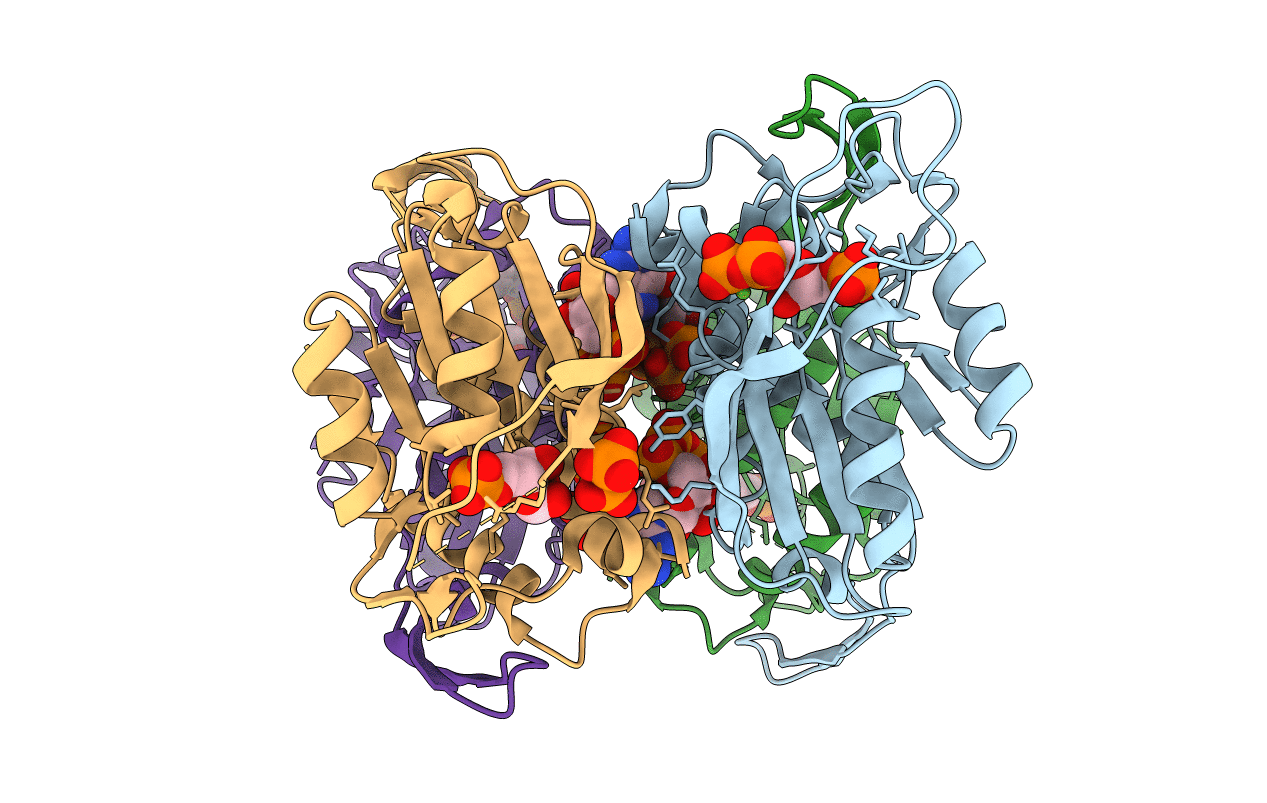
Deposition Date
2009-02-09
Release Date
2009-09-01
Last Version Date
2023-11-01
Entry Detail
PDB ID:
3G6W
Keywords:
Title:
Asymetric GTP bound structure of UPRTase from Sulfolobus solfataricus containing PRPP-mg2+ in half of the active sites and R5P and PPi in the other half
Biological Source:
Source Organism:
Sulfolobus solfataricus (Taxon ID: 2287)
Host Organism:
Method Details:
Experimental Method:
Resolution:
2.90 Å
R-Value Free:
0.27
R-Value Work:
0.21
Space Group:
P 1 21 1


